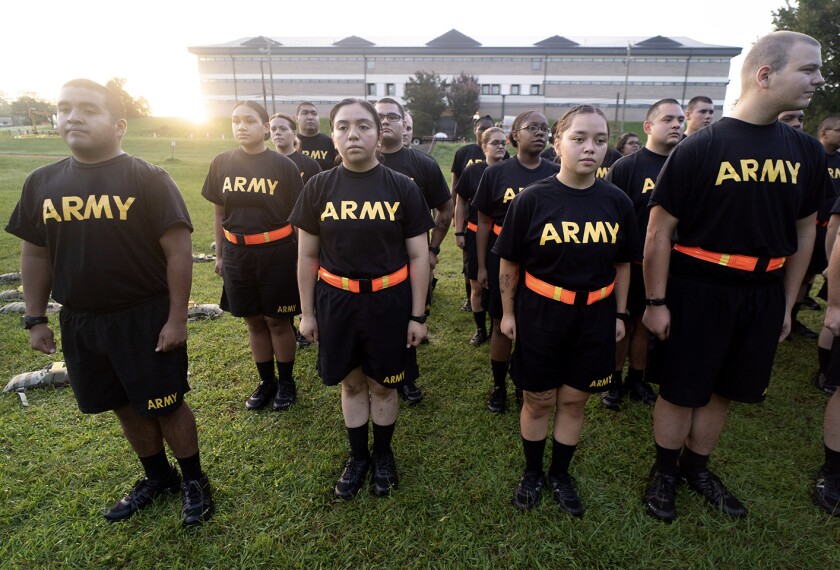After almost a decade of steady decline, the rate of students defaulting on college loans increased slightly in the latest year for which figures are available. Federal officials described that rise as statistically irrelevant, but some financial-aid observers said it is a potentially troubling turn.
The default rate climbed to 5.9 percent for fiscal year 2000, up from 5.6 percent the year before. That upward blip came after nine straight years of falling rates, from a peak of 22.4 percent in 1992.
Some loan advocates said that while it was important to identify the possible causes behind the higher default rate, released Sept. 12, a single bad year wasn’t enough to trouble them.
“With an increase that small, anything could have caused it, really,” said Kenneth E. Redd, the director of research and policy analysis at the National Association of Student Financial Aid Administrators, a Washington organization that assists colleges on loan issues. “Next year’s numbers will be a much greater indication of the default rate.”
At this point, the increase was more likely to prompt interest on Capitol Hill than serious worry among financial-aid gurus, Mr. Redd speculated. Recent events seemed to bear that out. When the latest data were released, Rep. George Miller, D-Calif., the ranking Democrat on the House Education and the Workforce Committee, sent a letter to Secretary of Education Rod Paige, asking for an explanation. Mr. Paige, in announcing the latest numbers, had linked the default increase partly to the poor economy’s impact on borrowers.
“I am disturbed that the default rate has increased after nine straight years of decline,” Rep. Miller said in a statement, warning that the Department of Education should guard against increases “reminiscent of the 1980s and early 1990s.”
Ellynne Bannon, an advocate for the State Public Interest Research Group, a consumer-watchdog organization in Washington, voiced concern about default rates creeping upward as students are piling up more debt than ever. Average student-loan debt rose to $16,928 in 1999-2000, almost twice the amount as eight years before, according to Education Department data.
“When you think about the two things together, that could give you cause for concern,” Ms. Bannon said.
‘Optimum’ Default Rate
Education Department officials acknowledged that higher debt and rising tuition are having an impact on students. But while promising to respond to Rep. Miller, Jeff Andrade, the department’s deputy assistant secretary for postsecondary education, also said the higher default rate might simply reflect minor shifts in the pool of student borrowers and institutions.
Overall, the low rates tell a story of success, Mr. Andrade said: The department has given schools and private lenders more flexibility in dealing with students who fall behind on loans, while continuing to crack down on schools that failed to counsel students on default.
“There is a heightened awareness on college campuses that loans have to be repaid on time,” Mr. Andrade said.
The national default rate measures loans made to students at about 6,400 higher education institutions who participate in the William D. Ford Federal Direct Loan Program and the Family Federal Education Loan Program. The former program allows students at participating schools to borrow directly from the federal government; the latter provides access to federally guaranteed loans from private lenders.
Students, who generally are required to begin repayment six to nine months after graduating or quitting school, are considered in default after 270 days without a payment. The latest estimates represent those with payments due on Oct. 1, 1999, who defaulted sometime before Sept. 30, 2001.
While the federal government administers loans, colleges and universities bear much of the legal responsibility for counseling students on how to manage their debt. In the 1980s and 1990s, Congress increased this obligation, and gave the Education Department more power to cut off schools from loan programs.
Over the past decade, agency officials have barred nearly 1,200 schools from federal student-loan programs because of high default rates, including five who stand to lose eligibility this year.
Default rates below 6 percent were “almost an optimum” level, or about the lowest possible, said Deputy Secretary of Education William D. Hansen. With interest rates as low as 4 percent, this is a great time to borrow, he said.
“This is only the second [year] in history the default rate’s been under 6 percent,” Mr. Hansen said last week. “We need to keep it in a relative perspective as to where we are.”





